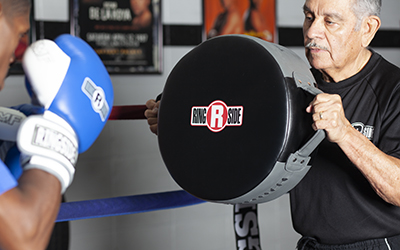
A lot of folks don’t understand the value of the Punch Shield. Why use a punch shield, when lighter, smaller punch mitts offer a more versatile training option?
But the Punch Shield absolutely has a place in your training. Held properly, a punch shield gives a fighter a similar experience as a heavy bag, but with more mobility. You can throw heavy punches, while your training partner moves you around the ring.
Further, a Punch Shield reduces some of the wear and tear on the coach. Punch Mitts are great, but they don’t allow a coach to tolerate very many full power shots.
Read on to learn more about the Punch Shield and where it fits into your training program.
What is a Punch Shield
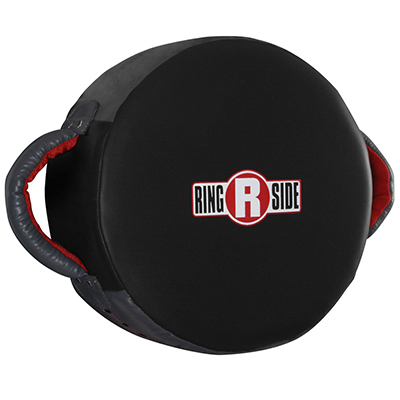
A punch shield is a thick, circular pad. The pad itself is often 5-7 inches thick and made from a dense substance like molded foam or dense-packed fibers. It is then enclosed in a durable material like leather. Shields often have handles attached to the outside edge to provide a trainer with greater control.
A punch shield provides a trainer with a sturdy, maneuverable target for training fighters. It can tolerate very powerful blows, like a kick shield or thai pad, but its round shape is designed to handle punches. You will often find a dot, logo, or other target image at the very center of the pad to facilitate accurate strikes.
Sign Up For Ringside EmailsWhy use a Punch Shield
So much of our target training centers around the use of Punch Mitts, often combined with a body protector. This combination is incredibly versatile, and does an amazing job of teaching speed and movement. But the Punch Shield offers value that the Punch Mitt does not.
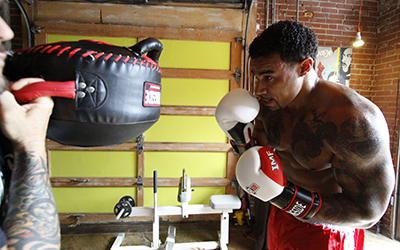
First, the Punch Shield possesses more mass and heft than punch mitts. The Punch Shield won’t move as much during a training session, which makes your fighter work harder. A lot of coaches describe the punch shield as having the feel of hitting a heavy bag, but the mobility of punch mitts.
Second, using a Punch Shield places less strain on the trainer’s body. Catching a boxer’s punches with your hands, even with sufficient padding, is no simple feat. Anything but the lightest contact will stress every joint in the arm: delicate joints of the fingers and hands; the wrist joint; the elbow; and even the shoulder. Using a punch shield mitigates some of that impact to your joints.
For training body blows, the punch shield offers more natural positioning than the mitts, but provides the trainer with significantly more protection from hard impacts than the body protector.
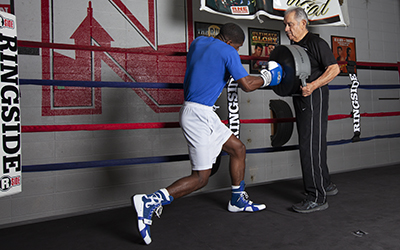
Finally, most Punch Shields can be handled while wearing boxing gloves. This means that two fighters can pair up for partner training and regular switch between the attacker and target roles. Rather than one person strapping on all of the target training gear, pairs of boxers can rapidly change roles throughout a single round of exercise.
Ways to Hold the Punch Shield
A trainer can work a fighter through different types of punches by orienting the pad in different ways.
Hold the pad vertically, braced firmly against your chest. This will be a great position for training jabs and crosses. Assuming you can brace appropriately, you can move the shield around left to right to give your fighter different targets.
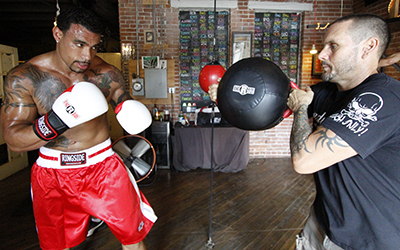
To train hooks, hold the pad an angle off to your side. You will brace the pad against the inside of the forearm of your outer arm. You can also brace the pad against the side of your rib cage to provide a slightly different angle.
Hold the pad out in front of you horizontally, with the target zone facing the floor, to train the uppercut. There is no easy way to brace the pad in this orientation, so be prepared for the impact.
A Punch Shield won’t replace Punch Mitts in your training program. But it’s an invaluable tool that provides training teams with a different look and feel for training powerful punches.


Great article! It validates what those of us who train fighters already know.